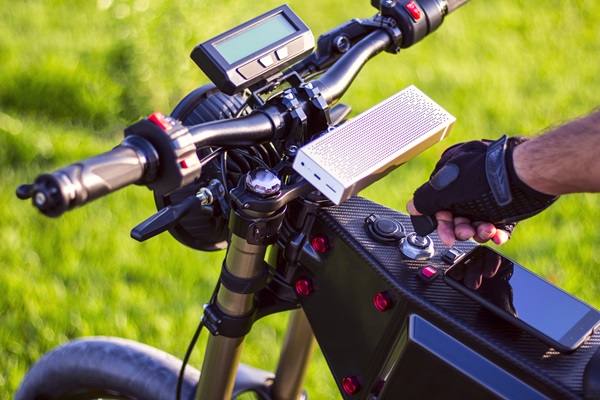Welcome to the e-bike buying guide 2024! As electric bikes continue to revolutionize the way we commute, exercise, and explore the outdoors, choosing the right e-bike can be both exciting and overwhelming. This guide is designed to simplify your decision-making process, offering expert insights into the latest models, must-have features, and essential tips for finding the perfect e-bike to fit your lifestyle and budget. Whether you’re a seasoned rider or a newcomer to the e-bike world, this comprehensive guide will help you navigate the booming market and make an informed purchase. Let’s get started on your journey to discovering the best e-bike for you!
Comprehensive E-Bike Buying Guide 2024
I. Understanding Electric Bikes
E-bikes, short for electric bikes, are a category of bicycles equipped with an integrated electric motor to assist with pedaling. They come in diverse styles, each tailored to specific needs and terrains.
II. Key Components of Electric Bikes
A. Electric Motor: A Hub of Power
E-bikes are as dynamic as the electric motors propelling them. There are primarily two motor types, the hub motor, and the mid-drive motor, each with its unique strengths. The hub motor is discreetly located in the wheel, providing a smooth and stealthy ride, while the mid-drive motor offers greater power, amplifying the rider’s pedaling efforts.
B. Battery Technology: Energizing Your Journey
Lithium-ion batteries are the lifeline of e-bikes, offering long-lasting power and quick recharging. Their capacity dictates the bike’s range, making battery selection a critical decision for riders. Charging options vary, but most e-bikes can be charged from a standard electrical outlet.
C. Pedal-Assist vs. Throttle-Control: How You Propel
E-bikes offer two primary modes of operation: pedal assist and throttle control. Pedal-assist systems provide support as you pedal, matching your effort with the motor’s output. Throttle control, on the other hand, allows you to accelerate without pedaling, similar to a scooter and electric scooter. The choice depends on personal preference and desired riding style.

III. E-Bike Frame and Design
A. Frame Materials: From Lightweight Alloys to Rugged Steel
E-bike frames are crafted from materials such as aluminum, carbon, and steel. The choice of frame material impacts the bike’s weight and durability. Aluminum frames are lightweight and corrosion-resistant, while carbon frames offer exceptional strength-to-weight ratios. Steel frames are known for their robustness but are comparatively heavier.
B. Frame Styles: Stepping Through or Diamond-Cut
E-bikes come in various frame styles, such as step-through and diamond frames. Step-through frames offer easy mounting and dismounting, making them ideal for city commuting and riders with limited mobility. Diamond frames, with their traditional look, provide greater structural integrity, suitable for rugged terrains.
IV. Suspension and Brakes
A. Suspension Types: Comfort on the Bumpy Road
The type of suspension is a crucial aspect of e-bike design. E-bikes can feature front suspension, full suspension, or rigid frames. Front suspension forks absorb shocks from uneven terrain, enhancing rider comfort. Full suspension e-bikes excel on challenging off-road trails, whereas rigid e-bikes forgo suspension for better efficiency on smooth roads.
B. Brake Systems: Stopping Power
E-bikes employ either disc brakes or rim brakes for reliable stopping power. Disc brakes offer superior braking performance in various weather conditions and are less affected by mud and water. In contrast, rim brakes are lightweight and low-maintenance but may require more effort in wet conditions.
V. E-Bike Controls and Display
A. Handlebar Controls: Navigating the Interface
E-bikes feature handlebar controls for adjusting power settings and monitoring vital functions. These controls allow riders to customize their riding experience with ease, altering speed, assist levels, and more. They often include intuitive buttons and screens, enhancing the user experience.
B. Display Screens: A Window to E-Bike Metrics
Display screens on e-bikes provide real-time information, such as battery life, speed, distance traveled, and assist levels. The type of display varies, with some offering touchscreen functionality. These screens keep riders informed and connected throughout their journey.

VI. Ride Performance and Handling
A. Ride Comfort: A Cushioning Ride
E-bike comfort depends on a combination of factors, including frame design, suspension, and tires. The goal is to reduce vibration and discomfort, especially during long rides. Finding the right balance is key to an enjoyable e-biking experience.
B. Handling and Stability: Navigating the Road
E-bike handling and stability are critical for safety and control. Achieving the perfect balance between agility and stability is a science, ensuring that riders can confidently navigate through traffic, sharp turns, and varied terrains.
VII. Connectivity and Smart Features
A. Smart Features: A Touch of Intelligence
E-bikes are becoming smarter with features like GPS tracking, app integration, and more. These add-ons enhance the riding experience by providing navigation, route tracking, and even fitness metrics.
B. Connectivity Options: Staying in the Loop
Connectivity is facilitated through Bluetooth, Wi-Fi, and other technologies. This ensures e-bikes can communicate with smartphones and other devices, allowing riders to stay informed and connected even on the go.
VIII. E-Bike Reviews and Ratings
When exploring the world of e-bikes, it’s essential to rely on both expert reviews and user feedback to make an informed decision.
A. Researching E-Bike Models: Where to Begin
Before making a decision, prospective e-bike buyers should consult an e-bike buying guide to know where to find reviews. Reputable sources and platforms provide comprehensive insights into e-bike models and their performance.
B. Analyzing Expert Opinions: A Guide to Trustworthy Reviews
Expert reviews offer an in-depth analysis of e-bike models, evaluating factors like motor performance, battery life, and overall ride quality. Reading and interpreting this e-bike buying guide is crucial to understanding the strengths and weaknesses of different e-bike options.

IX. Customer Feedback and User Reviews
A. The Value of User Opinions: Real-Life Experiences
User reviews are equally vital, providing authentic insights into e-bike ownership, In our e-bike buying guide prospective buyers can gain valuable information from riders who have firsthand experience with the product.
B. Identifying Trends in User Feedback: Consistency and Concerns
Analyzing user feedback can reveal patterns and common concerns. Recognizing these trends can help buyers anticipate potential issues and assess whether a specific e-bike suits their needs.
X. Top E-Bike Models and Brands
A. Popular E-Bike Manufacturers: Leading the Charge
Several brands have gained recognition in the e-bike industry for their commitment to innovation and quality. Learning about these manufacturers can help narrow down the options.
B. Top-Rated E-Bike Models: The Cream of the Crop
Highlighting the top-rated e-bike models on this e-bike buying guide showcases the best of the best, revealing what sets them apart and why they’re considered exceptional choices.
XI. Real-World Testing
A. The Importance of Test Rides: A Firsthand Experience
Test rides are invaluable. They provide a firsthand experience of how an e-bike handles, the comfort it offers, and whether it aligns with personal preferences.
B. Test Ride Checklist: What to Look For
Having a checklist while test-riding e-bikes ensures that you assess the critical aspects, such as comfort, handling, and overall ride quality, helping you make an informed decision.
XII. Personalization and Customization
A. Customizing Your E-Bike: Tailoring to Your Tastes
E-bike enthusiasts often seek ways to personalize their rides. Customization options range from selecting accessories and upgrading components to match individual preferences.
B. Aftermarket Accessories: Enhancing Your E-Bike
A wide range of aftermarket accessories is available to enhance e-bikes, from upgraded seats and cargo racks to advanced lighting systems. These additions can elevate your e-biking experience.
XIII. Conclusion
As we conclude the e-bike buying guide 2024, we hope you now feel equipped with the knowledge and confidence to select the perfect e-bike for your needs. With a wide array of models, features, and price points available, there’s an e-bike out there for everyone—whether you’re looking for a reliable commuter, a fitness partner, or an adventure companion. Remember to consider key factors such as battery life, motor power, and comfort, and don’t hesitate to test-ride a few options before making your final decision. Embrace the future of transportation and enjoy the many benefits of riding an electric bike. Happy e-biking

